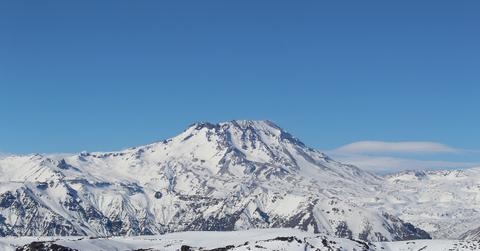Chile Uses Geological Advantage To Push Renewable Energy
Chile has the geological potential to grow their green energy, such as creating geothermal plants at volcanoes and installing solar farms at one of the hottest deserts in the entire world. The renewable push has been made due to inconsistencies in traditional methods.
Updated May 23 2019, 9:23 a.m. ET
Chile features one of the fastest-growing renewable energy sectors in the world. As of 2014, nine percent of the country is fueled by sustainable sources and they could reach 20 percent by 2020. Thanks to great resources available in the area, this transition will only continue at a rapid pace.
Why does Chile have the ability to push renewable energy? One reason is the vast amount of volcanoes in the area. They have 15 percent of the world’s craters and with geothermal technology, that could potentially generate 16,000 megawatts of energy. The Cerro Pabellon geothermal plant, with a capacity of 48 megawatts, turned on back in March. It’s the first plant of its kind in South America and can fuel around 165,000 homes.
Another reason that can make it skyrocket is the extreme levels of solar radiation. Northern Chile receives the largest amount of sunlight in the entire world. Now that technology continues to get cheaper, utility companies were able to gobble up the area “to supply electricity at about half the cost of coal-fired plants,” according to The Washington Post.
Chile joins other Latin American countries as one of the top 10 in the world that generates renewable energy. It’s an ongoing push that has a goal set for 2050 to run on 90 percent green power. The movement hasn’t really kicked off until a few years ago, but many years prior saw the inevitable actions needed to be taken.
Traditional fossil fuels and hydropower weren’t going to be reliable in Chile. It has to import nearly all of its oil and gas, and 2007 marked a rocky time that saw imports be cut off in Australia. Changes in weather impacts the water level for hydro plants, especially when it came to droughts draining the supply. Building these plants have also caused massive flooding and other environmental hazards.
Chilean president Michelle Bachelet, who started another term in 2014, points to that as why she’s been so aggressive in moving toward renewables.“I am convinced that climate change is a reality, a complete and absolute reality,” Bachelet said according to The New York Times. “We think it’s essential for our economic development to have cleaner energy because we want this planet to last.”
Wind power along the coastline in the Atacama Desert will aid the solar power generated in the baking sun. All of this energy will supplement what’s created from the geothermal plants at volcanoes, which offers the most stable of the resources. Unlike wind and solar generation, geothermal activity can operate at all times.
Only three percent of Chile’s homes can be fueled by the initial geothermal plant, but it’s a tremendous start in the right direction. Solar has also improved by six times the amount it had back in 2014 when Bachelet took office. They’re expected to fill 60 percent of the clean energy bill themselves by 2035.
